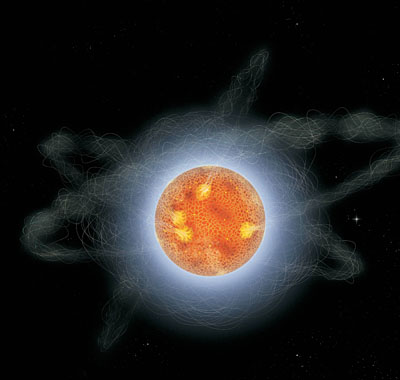A couple of things to take care of:
Mateo has one "t".
The upside down "y" thing that is a symbol for wavelength is called a "lambda", and the "v" looking thing that is a symbol for frequency is called a "nu". In case you were wondering, which I was.
If you still do not understand the electro-magnetic spectrum, here's a quick song to ingrain it into your brain:
So today, we did some stuff. Like chemistry stuff. Like really complicated electron orbital stuff.
We began with the rather disheartening concept of not really being able to know where a specific electron is at a given point in time. What we do know is that there is a certain area around the nucleus where we will "probably" find the electrons. However, as Kaitlin astutely observed, there is a small small chance one of our poor electrons are lost somewhere, searching desperately for their owner.
From there, we moved on to Quantum Mechanics.
Mr. Lieberman stressed the difference between electron orbits and electron orbitals. In fact, electron orbits don't actually exist. This means that everything you learned about how atoms look is wrong. Everything that our middle school teachers taught us is wrong. And above all, Jimmy Neutron was wrong.

So now that everything you have learned has been upset, we are learning a new way to define an electron's location: orbitals. As stated previously, we cannot know for sure where an electron is in relation to its nucleus, or in relation to anything at all, so scientists decided to create a thing called an orbital. Basically, an orbital is an area where there is great er than a 90% chance of finding an electron. In pictures it looks more like a fuzzy sphere kind of thing. However, Bohr's electron is much more conducive to the imagination and is thus still taught in elementary and middle schools today.
Instead of equating the location of an electron with a sort of solar system looking model, scientists like to look at the location as sort of a seat in a stadium, or concert hall, or auditorium. Except in an altogether different fashion. Tickets typically have four pieces of information on them in regards to where your seat it, the gate you enter in, the section, the row, and the seat. Each one getting more specific, and no two tickets to the same seat.
Much like the ticket analogy, we "locate" electrons with a series of QUANTUM NUMBERS. Each number gets sequentially more specific until we can know the relative energy of the orbital, its shape, its orientation in space, and which direction its spinning.
The first number we must concern ourselves with is the value "n". Thankfully, "n" comes only in integer form (that is, 1,2,3,4,5,6,7,8,9,10,11...) basically, anything positive that is not a decimal or a fraction. It aids in determining the energy level of the electron; the larger the "n" value, the higher the energy. Unfortunately, we have only really found up to 7, though I guess we are fairly close to obtaining the eighth.
The next number is represented by the letter "l" (thats "L", only lower-case). This, fortunately, also comes in integer values. These are limited however, to a range extending from 0 to n-1. "n", if you recall, is the relative value of the energy of an electron. "l" is the energy sublevel of an electron, sort of like a more accurate way of defining an electron's energy. If you think about it, the number of sublevels is the same as whatever energy level it is in. If that doesn't make sense, the book says it like this:
In the nth principal level, there are n different sublevels.
So scientists think that it would be easier to memorize letters than numbers and gave us this:
sublevel: 0 | 1 | 2 | 3 | 4.....
letter : s | p | d | f | g ... and from here it goes on in alphabetical order. Furthermore, when defining a sublevel (using the s-p-d-f system), you put the principal (the n) value before it. So for example, if you were in level 4, sublevel 2, you would have 4d. If you were in level 5 sublevel 6, WAIT THATS NOT POSSIBLE. Its not possible because the sublevel values are confined between n-1 and 0. HA. But if you were in level 5 and sublevel 4, you would say 4g, like sprint.
Next variable: ml. ml is also made up of integer values, and its range extends from "l" to -"l". That's positive "l" to negative "l". This defines the orientation of the orbital. The higher the sublevel, the higher the number of orientations. For example, in sublevel 3, you can have ml values of 3, 2, 1, 0, -1, -2 , -3. and they all represent different orientations of the electron cloud. Look at this picture if you still don't get it.
The final number is represented by ms. Basically, it has nothing to do with the other values. It just shows which way the electron is spinning. It either has a value of +1/2 or - 1/2. Or sometimes referred to as "spin up" and "spin down". Each orbital can have 2 electrons, each one spinning a different direction.
This is a fun song, if you are working out, are just walking, or just sitting down, and it has a rather fitting title, considering it's the end of the post.
This is a tough unit, so don't worry if you don't get it right away. I'd be willing to help if you need it.
Anyway, stay awesome period six.
Next scribe is going to be.. peter w.... PPEEUTTUUHHRR DUUUEEHHBBLE-YUEEWW



